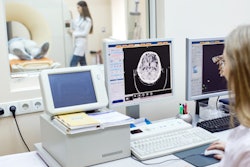Friday, November 30 | 11:30 a.m.-11:40 a.m. | SST08-07 | Room E263
If you are still in Chicago on Friday, the issue of serial administration of a macrocyclic gadolinium-based contrast agent (GBCA) for pediatric patients will be of interest.This study focused on T1-weighted hyperintensity within the dentate nucleus, which has been a prime location in the brain for gadolinium deposition.
Researchers looked at 10 patients younger than 18 years old who received an average of six MRI brain scans with the GBCA gadoteridol (ProHance, Bracco Imaging) in 2016 and 2017. The patients had no previous exposure to any other GBCA. For comparison purposes, the researchers also studied 10 pediatric patients who each had six MRI scans with the linear GBCA gadodiamide (Omniscan, GE Healthcare). Each subject underwent the same T1-weighted protocol for the first and last scans.
Among the pediatric patients given gadoteridol, the researchers found no significant change in the mean dentate nucleus-to-pons signal intensity ratio from the first to the last scan. Among those who received gadodiamide, they found a significant increase in the mean dentate nucleus-to-pons signal intensity ratio between the two scans.
The researchers also took into consideration the number of administered doses of gadolinium, age, diagnosis, history of chemotherapy, and history of radiation. Given those factors, the change in dentate nucleus-to-pons ratio from the first to the last scan was significantly lower in the gadoteridol group than in the gadodiamide group.
Based on those results, the researchers suggested that the difference in dentate nucleus-to-pons signal intensity ratio "presumably" was due to gadolinium deposition.




















